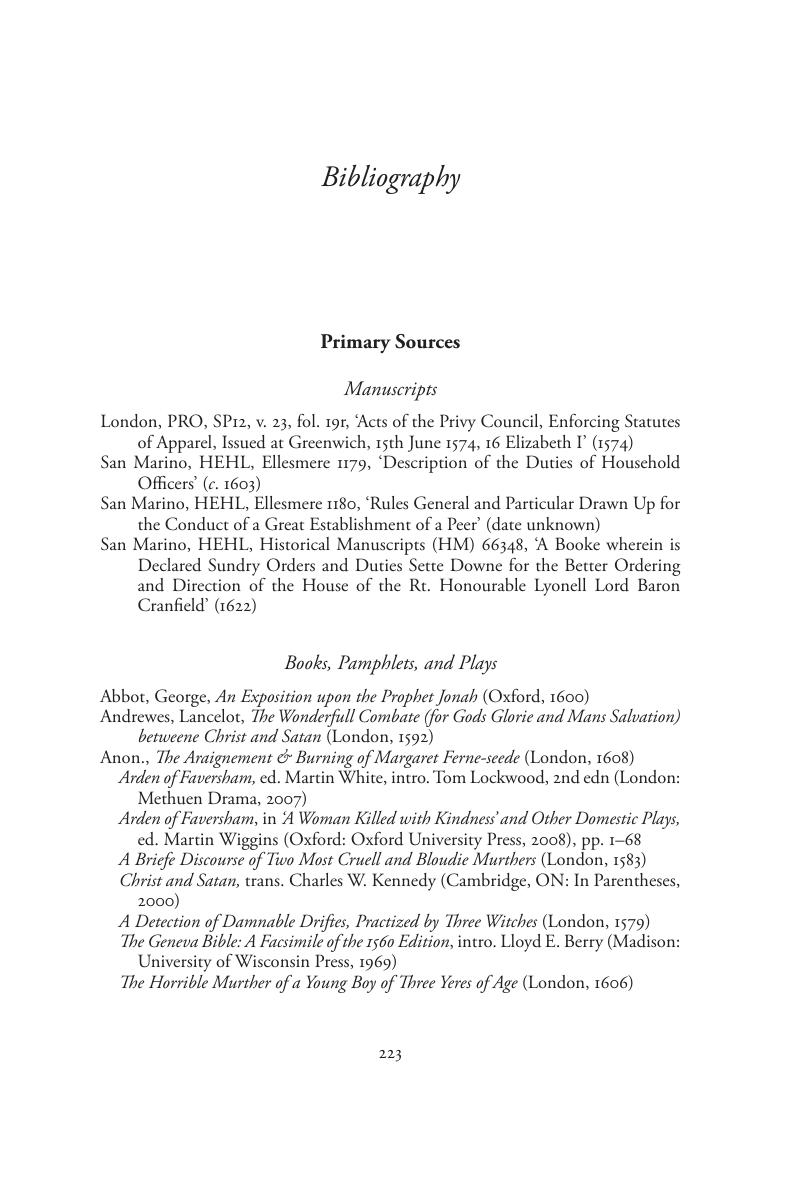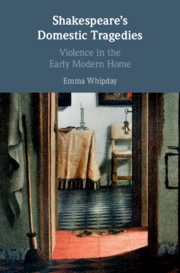Book contents
- Shakespeare’s Domestic Tragedies
- Shakespeare’s Domestic Tragedies
- Copyright page
- Contents
- Figures
- Acknowledgements
- Note on the Text
- Abbreviations
- Introduction Shakespeare’s Domestic Tragedies
- Chapter 1 Home
- Chapter 2 Household
- Chapter 3 House
- Chapter 4 Neighbourhood
- Afterword Homeless
- Bibliography
- Index
- References
Bibliography
Published online by Cambridge University Press: 04 January 2019
- Shakespeare’s Domestic Tragedies
- Shakespeare’s Domestic Tragedies
- Copyright page
- Contents
- Figures
- Acknowledgements
- Note on the Text
- Abbreviations
- Introduction Shakespeare’s Domestic Tragedies
- Chapter 1 Home
- Chapter 2 Household
- Chapter 3 House
- Chapter 4 Neighbourhood
- Afterword Homeless
- Bibliography
- Index
- References
Summary

- Type
- Chapter
- Information
- Shakespeare's Domestic TragediesViolence in the Early Modern Home, pp. 223 - 258Publisher: Cambridge University PressPrint publication year: 2019



